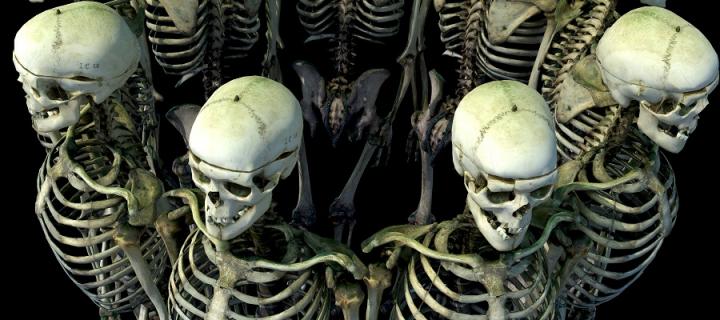Burke and Hare
The Burke and Hare murders in Edinburgh's West Port were infamous and destroyed the career of Edinburgh anatomist Robert Knox.

During the 19th century, there was a chronic shortage of cadavers for anatomy classes in Edinburgh. This gave rise to a new industry in the city: grave-robbing.
The best-known of the 'Resurrection Men' were William Burke and William Hare, who took the grisly practice one step further. The pair murdered at least 16 people during the period 1827-1828, selling the cadavers to Dr Robert Knox's anatomy school.
Murders
William Burke (1792-1829) was an Irish navvy who came to Scotland to work on the Union canal. When the work was finished, he moved into a lodging house near the Grassmarket owned by the wife of William Hare (1729-?).
Shortly after this, a fellow lodger died owing Hare some money. To recoup his losses, Hare decided to sell the body to Dr Robert Knox, a private anatomy teacher who had set up classes in competition with those run by the University.
Burke and Hare realised this could be a lucrative income and, too inpatient to wait for people to die, they took to murder to supply the anatomy schools.
Arrest and execution
On 1st November 1828, police raided Burke’s house having been informed by some former house guests that there was a body under the bed. By the time the police arrived there was only a single spot of blood, but Burke’s and his wife’s stories did not agree and they were arrested. The Hares were arrested the following day.
Hare escaped by turning King’s Evidence against Burke, and Burke was hanged on 28 January, 1829. In accordance with the law, his body was handed to the medical school for dissection and his skeleton is displayed in the Anatomical Museum to this day.
What happened to Hare, however, is unclear. Some believe that he made his way to London where he was thrown into a lime pit and blinded as a result. He was then said to have spent the rest of his life as a blind beggar on the streets of London. However, evidence suggests he went to Dumfries and then he returned to Ireland.
Robert Knox's downfall
Despite public outcry, Robert Knox was never tried for his involvement in the murders, though his reputation in Edinburgh was severely damaged. Shortly after the Burke and Hare case, the Royal College of Surgeons pressured him to resign his role of curator of the museum.
Knox moved to London after the death of his wife. Failing to get a university teaching post, he worked as an anatomist at the Free Cancer hospital. He published several books, some controversial, and died in Hackney, London, in 1862.

